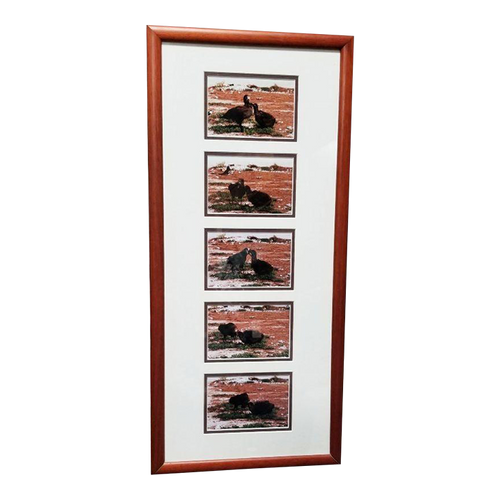Edward Sheriff Pictorialist style Blue-toned gelatin silver print photo titled Aphrodite (Siren of the Sea) named after the ancient Greek goddess of sexual love. The photo shows a young nude woman free-floating in the ocean. This original print comes from his Los Angeles Photo signed: Curtis LA Original Tag: The Edward S. Curtis Studio Photographs-Indian Studies Biltmore Hotel, Los angeles Born near White Water, Wisconsin, Edward Sheriff Curtis taught himself photography at a young age. He moved to Seattle in the mid-1880s and developed a reputation for romantic Pictorialist landscapes and portraits. Although he made his first portrait of a Native American in 1896, it was not until after his return from documenting an 1899 expedition in Alaska that Curtis became interested in a large-scale photolithographic study of Native American culture. President Theodore Roosevelt saw Curtis's early Native American images and introduced the photographer to the banker J. P. Morgan, who agreed to commit $75,000 to support Curtis's completion and publication of his comprehensive study. The resulting twenty-volume work, The North American Indian, featuring some 1,500 photographs, appeared in installments between 1907 and 1930. Over the course of Curtis's career, he made more than 40,000 platinum prints, photogravures, and drawings of Native Americans across the United States and British Columbia. Curtis's images enjoyed a brief period of popularity after the turn of the century, because of the nostalgic interest in the vanishing Native American cultures, but by the time of his death, his work had been forgotten. Numerous monographs have been published on his work since its rediscovery in the late 1960s. Curtis intended to document disappearing Native American cultures and communities, but his work partakes as much of the romance and idealism of Pictorialism as of the scientific records of documentary photography. Surrounded by soft, hazy light, his subjects often wore inappropriate costumes or held props provided by the artist, reflecting Curtis's common cultural assumptions about what it meant to be "Indian." When automobiles or other material signs of modern life were captured in a frame, Curtis would scratch them out of his negatives. He recorded a highly subjective impression of Native American life rather than its full complexity, and his encyclopedic work reveals as much about American tastes for exotic images in the late nineteenth and early twentieth centuries as it does about Native American life. Meredith Fisher Handy et al. Reflections in a Glass Eye: Works from the International Center of Photography Collection. New York: Bulfinch Press in association with the International Center of Photography, 1999, p. 213.










